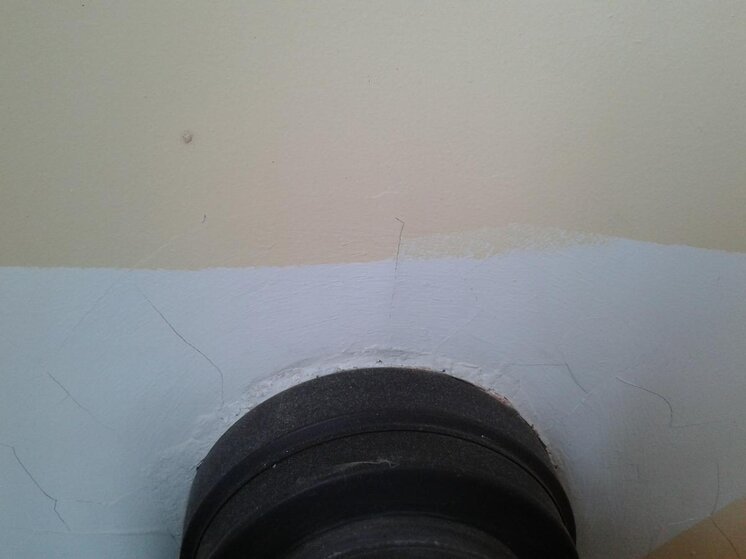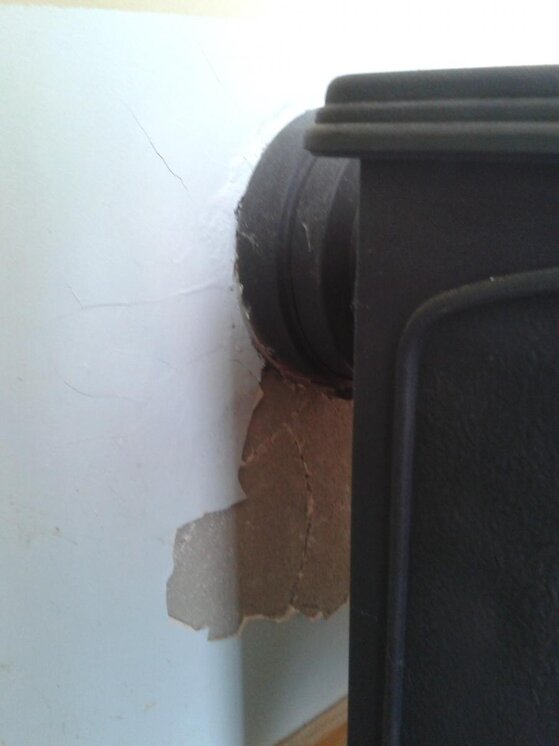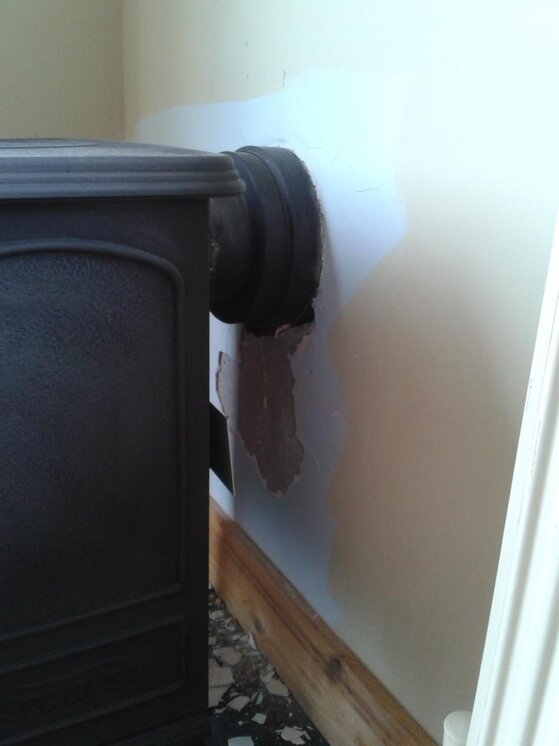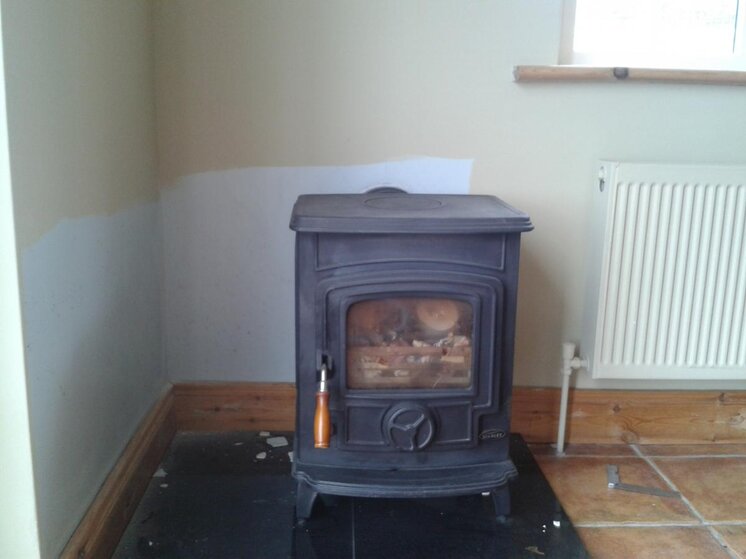S
synott.nicola
Hi, I am a diy amateur enthusiast. I have recently completed my first tiling job (kitchen splashback) and it turned out really well!! My next project is to tile (ceramic tiles) the back of a multifuel stove (situated in a corner of the kitchen) to protect the walls from marks etc (plastered and painted). There were what I thought were some hairline cracks in the plaster but when I went to check for loose paint and clean down the walls it turned out to be more than hairline cracks and the plaster is just falling off the wall. Photos attached. Anyway my questions are: What would you advise? 1) Remove the plaster in the area to be tiled completely and tile onto the plasterboard? If so use what adhesive? I have evo-stik rapid curing quick set ceramic tile adhesive, would this be ok? 2) replaster using a sand, lime, cement mix? If so what proportions? Would 4 weeks be required for this to dry fully before tiling? 3) Install some fireproof board behind the stove and tile onto that? If so what board and how would I attach this to the wall? Thanks a million in advance!! 4) Any other advise greatly appreciated. Nicola




